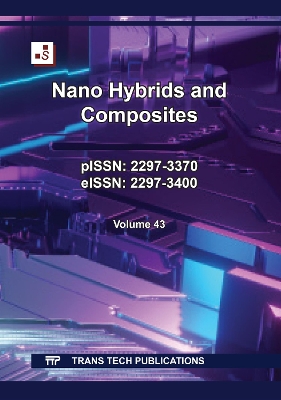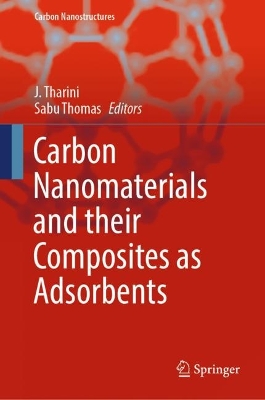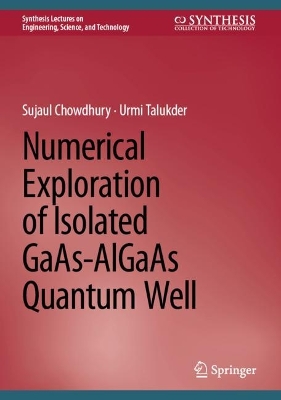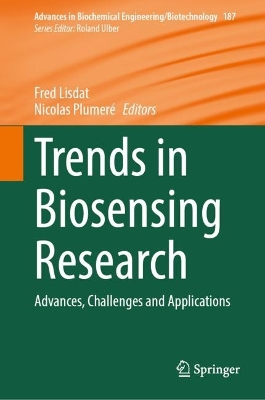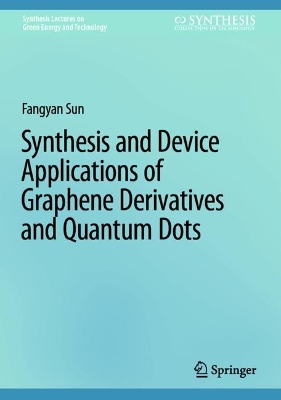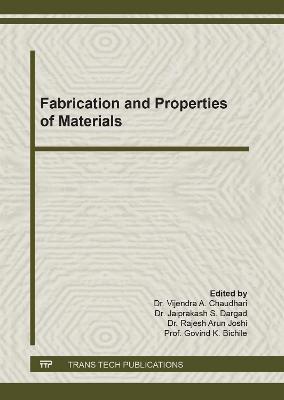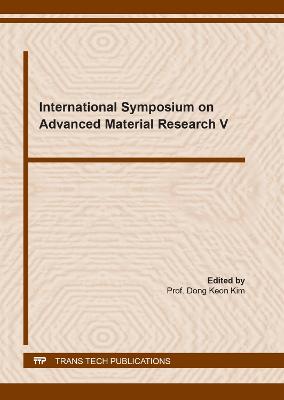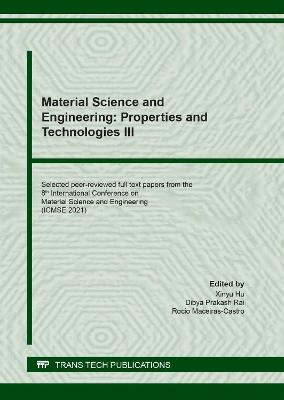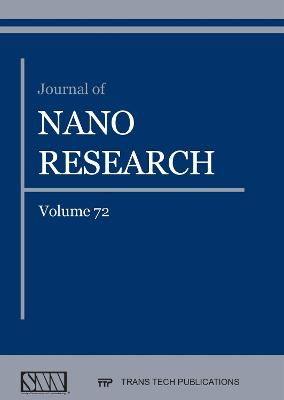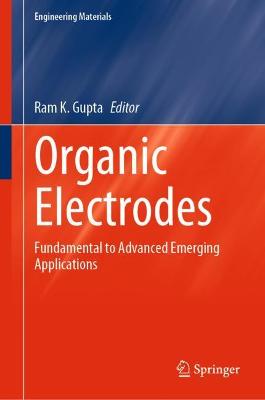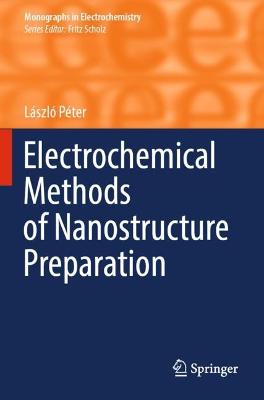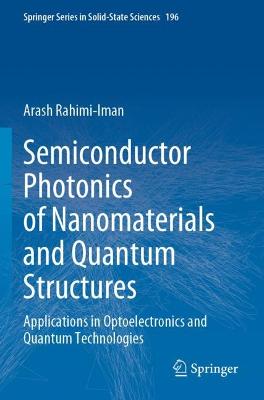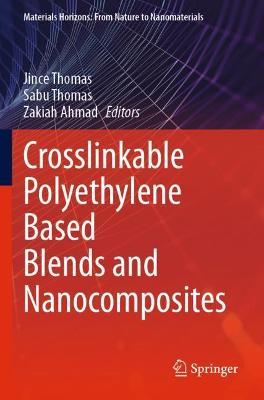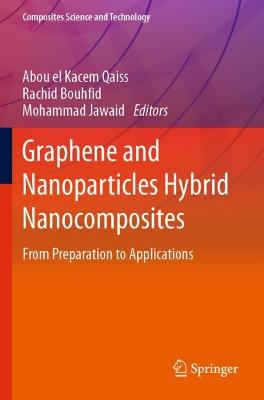Functional Organic Liquids
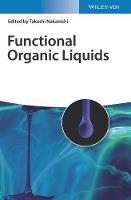 portes grátis
portes grátis
Functional Organic Liquids
Nakanishi, Takashi
Wiley-VCH Verlag GmbH
03/2019
296
Dura
Inglês
9783527341900
15 a 20 dias
702
1 Room-Temperature Liquid Dyes 1
Bhawani Narayan and Takashi Nakanishi
1.1 Introduction 1
1.2 Design Strategy: Alkyl Chain Engineering 2
1.3 Alkylated ?-Molecular Liquids 3
1.3.1 Carbazoles 3
1.3.2 Azobenzenes 5
1.3.3 Naphthalenes 6
1.3.4 Anthracenes 6
1.3.5 Pyrenes 8
1.3.6 ?-Conjugated Oligomers 10
1.3.6.1 Oligo-(p-phenylenevinylene)s (OPVs) 10
1.3.6.2 Oligo-(p-phenyleneethylene)s (OPEs) 11
1.3.6.3 Benzothiadiazoles (BTDs) 12
1.3.7 Porphyrins 12
1.3.8 Fullerenes 12
1.4 Alkylsilane-Chain-Appended ?-Molecular Liquids 13
1.4.1 Triarylamines 14
1.4.2 Phthalocyanines 15
1.4.3 Oligofluorenes 15
1.5 Analytical Tools for Functional Molecular Liquids 16
1.5.1 Analytical Tools for Bulk Physical Properties 16
1.5.1.1 Structural Analysis 16
1.5.1.2 Microscopy Techniques 16
1.5.1.3 Rheology 16
1.5.1.4 Calorimetric Techniques 17
1.5.2 Analytical Tools for Spectroscopic Properties 17
1.5.2.1 UV-vis Analysis 17
1.5.2.2 Fluorescence Measurements 17
1.5.2.3 Fluorescence Lifetime Analysis 17
1.5.2.4 FTIR Measurements 17
1.6 Conclusion 18
References 18
2 Low-Melting Porphyrins and Their Photophysical Properties 21
Agnieszka Nowak-Krol and Daniel T. Gryko
2.1 Introduction 21
2.2 Liquid Porphyrins 22
2.3 Low-Melting trans-A2B2-Arylethynyl Porphyrins 28
2.4 Liquid Crystalline trans-A2B2-Arylethynyl Porphyrins 31
2.5 Bis-porphyrins 31
2.6 Low-Melting Corroles 34
2.7 Summary and Outlook 34
References 35
3 Porous Liquids 39
Stuart L. James and Ben Hutchings
3.1 Introduction 39
3.2 Porosity in Solids 40
3.3 Porosity in Liquids 41
3.4 Porous Liquids Reported in the Literature 43
3.4.1 Type 1 43
3.4.2 Type 2 46
3.4.3 Type 3 48
3.4.4 Other Types of Porous Liquids and Theoretical Studies 48
3.5 Opportunities for Applications and Current Challenges 49
3.6 Concluding Remarks 50
References 50
4 Cyclic Host Liquids for the Formation of Rotaxanes and Their Applications 53
Tomoki Ogoshi, Takahiro Kakuta, and Tada-aki Yamagishi
4.1 Introduction 53
4.2 Liquid Pillar[n]arenes at Room Temperature 54
4.2.1 Synthesis and Structure of Pillar[n]arenes 54
4.2.2 Versatile Functionality of Pillar[n]arenes 55
4.2.3 Molecular Design to Produce Liquid-State Macrocyclic Hosts 56
4.2.3.1 Pillar[n]arenes 56
4.2.3.2 Cyclodextrins 58
4.2.3.3 Crown Ethers 60
4.2.3.4 Calix[n]arenes and Cucurbit[n]urils 60
4.3 Complexation of Guest Molecules by Pillar[5]arenes 61
4.3.1 Host Properties of Pillar[5]arenes 61
4.3.2 Complexation of Guest Molecules in Liquid Pillar[5]arenes 62
4.4 High Yield Synthesis of [2]Rotaxane and Polyrotaxane Using Liquid Pillar[5]arenes as Solvents 63
4.5 Conclusion and Remarks 70
References 71
5 Photochemically Reversible Liquefaction/Solidification of Sugar-Alcohol Derivatives 75
Haruhisa Akiyama
5.1 Introduction 75
5.2 Mechanism of the Phase Transition Between Liquid and Solid State 76
5.3 Effect of Molecular Structure 79
5.3.1 Number of Azobenzene Units 79
5.3.2 Alkyl Chain Length 80
5.3.3 Mixed Arms 82
5.3.4 Structure of Sugar Alcohol 83
5.4 Summary 85
Acknowledgments 85
References 85
6 Functional Organic Supercooled Liquids 87
Kyeongwoon Chung, Da Seul Yang, and Jinsang Kim
6.1 Organic Supercooled Liquids 87
6.2 Stimuli-Responsive Organic Supercooled Liquids 88
6.2.1 Shear-triggered Crystallization 88
6.2.2 Scratch-Induced Crystallization of Trifluoromethylquinoline Derivatives 89
6.2.3 Highly Sensitive Shear-Triggered Crystallization in Thermally Stable Organic Supercooled Liquid of a Diketopyrrolopyrrole Derivative 91
6.3 Highly Emissive Supercooled Liquids 95
6.4 Conclusion 97
References 97
7 Organic Liquids in Energy Systems 101
Pengfei Duan, Nobuhiro Yanai, and Nobuo Kimizuka
7.1 Introduction 101
7.2 Photoresponsive ?-Liquids for Molecular Solar Thermal Fuels 102
7.3 Azobenzene-Containing Ionic Liquids and the Phase Crossover Approach 107
7.4 Photon Upconversion and Condensed Molecular Systems 113
7.5 TTA-UC Based on the Amorphous ?-Liquid Systems 114
7.6 Photon Upconversion Based on Bicontinuous Ionic Liquid Systems 118
7.7 Conclusion and Outlook 121
References 122
8 Organic Light Emitting Diodes with Liquid Emitters 127
Jean-Charles Ribierre, Jun Mizuno, Reiji Hattori, and Chihaya Adachi
8.1 Introduction 127
8.2 Organic Light-emitting Diodes with a Solvent-Free Liquid Organic Light-emitting Layer 129
8.2.1 Basics of Conventional Solid-state OLEDs 129
8.2.2 First Demonstration of a Fluidic OLED Based on a Liquid Carbazole Host 130
8.2.3 Introduction of an Electrolyte to Improve the Liquid OLED Performance 132
8.2.4 Liquid OLED Material Issues 134
8.3 Microfluidic OLEDs 135
8.3.1 Refreshable Liquid Electroluminescent Devices 135
8.3.2 Fabrication of Microfluidic Organic Light-Emitting Devices 137
8.3.3 Large-Area Flexible Microfluidic OLEDs 137
8.3.4 Multicolor Microfluidic OLEDs 140
8.3.5 Microfluidic White OLEDs 143
8.4 Conclusions 147
References 148
9 Liquids Based on Nanocarbons and Inorganic Nanoparticles 151
Avijit Ghosh and Takashi Nakanishi
9.1 Liquid Nanocarbons 151
9.1.1 Introduction 151
9.1.2 General Synthetic Strategies 151
9.1.3 Liquid Fullerenes 152
9.1.4 Liquid-Like Carbon Nanotubes 154
9.1.5 Fluidic Graphene/Graphene Oxide 156
9.2 Liquids Based on Inorganic Nanoparticles 158
9.2.1 Background 158
9.2.2 Liquid-Like Silica Nanoparticles 159
9.2.3 Functional Colloidal Fluids 160
9.2.4 Fluidic Functional Quantum Dots 161
9.3 Conclusions 162
References 164
10 Solvent-Free Nanofluids and Reactive Nanofluids 169
John Texter
10.1 Introduction 169
10.1.1 Solvent-Free Nanofluids 170
10.1.2 Simulation and Theoretical Modeling 180
10.1.3 Reactive Solvent-Free Nanofluids 183
10.2 Syntheses of Nanofluids 184
10.2.1 Core-Corona-Cap Nanofluid 184
10.2.2 Core-Free Corona-Cap Nanofluid 186
10.2.3 Core-Corona Nanofluid 186
10.3 UV Reactive Nanofluids 187
10.3.1 Model Coatings andThermomechanical Characterization 187
10.3.2 UV Protective Coatings 191
10.4 Polyurethane and Polyurea Coupling of Nanofluids 191
10.4.1 Air-Cured Polyurethane Coupling with Isothiocyanate Nanofluid 192
10.4.2 Air-Cured TDI Coupling with Amino Nanofluid 195
10.4.3 Polyurethane Shape-Memory Materials 196
10.4.4 PDMS-Amino Nanofluids Coupling with HMDI 197
10.4.5 Polyurethane Coupling with Hydroxyl Nanofluid 198
10.5 Epoxy Coupling with Amino Nanofluid 198
10.6 Using Nanofluids to Make Composites Tougher 199
10.6.1 Nanosilica Polyacrylate Nanocomposites 199
10.6.2 MWCNT Polyamide Nanocomposites 200
10.6.3 MnSn(OH)6 Thread Epoxy Nanocomposites 201
10.6.4 Graphene Oxide Epoxy Nanocomposites 201
10.7 Summary and Future Prospects 201
Acknowledgments 203
References 203
11 Solvent-Free Liquids and Liquid Crystals from Biomacromolecules 211
Kai Liu, Chao Ma, and Andreas Herrmann
11.1 Introduction 211
11.2 Solvent-Free Nucleic Acid Liquids 212
11.2.1 Fabrication of Solvent-Free Nucleic Acid Liquids 212
11.2.2 Electrical Applications Based on Solvent-Free Nucleic Acid Liquids 215
11.3 Solvent-Free Protein Liquids 217
11.3.1 Fabrication of Solvent-Free Protein Liquids 217
11.3.2 Electrochemical Applications Based on Solvent-Free Protein Liquids 222
11.3.3 Catalysis of Solvent-Free Enzyme Liquids 224
11.4 Solvent-Free Virus Liquids 226
11.5 Mechanism for the Formation of Solvent-Free Bioliquids 228
11.6 Conclusions and Outlook 229
References 230
12 Ionic Liquids 235
Hiroyuki Ohno
12.1 What Is Ionic Liquid? 235
12.2 Some Physicochemical Properties 236
12.3 Preparation 238
12.4 IL Derivatives 239
12.4.1 Zwitterions 239
12.4.2 Self-Assembled ILs 239
12.4.3 Polymers 241
12.5 IL/Water Functional Mixture 241
12.6 Application 243
12.6.1 Reaction Solvents 243
12.6.2 Electrolyte Solution 243
12.6.3 Biomass Treatment 244
12.6.4 Solvents for Proteins and Biofuel Cell 246
12.7 Summary 247
Acknowledgments 247
References 247
13 Room-Temperature Liquid Metals as Functional Liquids 251
Minyung Song and Michael D. Dickey
13.1 Introduction: Room-temperature Liquid Metals 251
13.1.1 Mercury 251
13.1.2 Gallium-Based Alloys 252
13.1.3 Oxide Skin on Ga Alloys 252
13.2 Removal of Oxide Skin 252
13.3 Patterning Techniques for Liquid Metals 253
13.3.1 Lithography-enabled Processes 254
13.3.2 Injection 255
13.3.3 Subtractive 256
13.3.4 Additive 256
13.4 Controlling Interfacial Tension 257
13.4.1 Surface Activity of the Oxide on Liquid Metal Droplets 258
13.5 Applications of Liquid Metals 261
13.6 Conclusions and Outlook 263
References 263
Index 273
1 Room-Temperature Liquid Dyes 1
Bhawani Narayan and Takashi Nakanishi
1.1 Introduction 1
1.2 Design Strategy: Alkyl Chain Engineering 2
1.3 Alkylated ?-Molecular Liquids 3
1.3.1 Carbazoles 3
1.3.2 Azobenzenes 5
1.3.3 Naphthalenes 6
1.3.4 Anthracenes 6
1.3.5 Pyrenes 8
1.3.6 ?-Conjugated Oligomers 10
1.3.6.1 Oligo-(p-phenylenevinylene)s (OPVs) 10
1.3.6.2 Oligo-(p-phenyleneethylene)s (OPEs) 11
1.3.6.3 Benzothiadiazoles (BTDs) 12
1.3.7 Porphyrins 12
1.3.8 Fullerenes 12
1.4 Alkylsilane-Chain-Appended ?-Molecular Liquids 13
1.4.1 Triarylamines 14
1.4.2 Phthalocyanines 15
1.4.3 Oligofluorenes 15
1.5 Analytical Tools for Functional Molecular Liquids 16
1.5.1 Analytical Tools for Bulk Physical Properties 16
1.5.1.1 Structural Analysis 16
1.5.1.2 Microscopy Techniques 16
1.5.1.3 Rheology 16
1.5.1.4 Calorimetric Techniques 17
1.5.2 Analytical Tools for Spectroscopic Properties 17
1.5.2.1 UV-vis Analysis 17
1.5.2.2 Fluorescence Measurements 17
1.5.2.3 Fluorescence Lifetime Analysis 17
1.5.2.4 FTIR Measurements 17
1.6 Conclusion 18
References 18
2 Low-Melting Porphyrins and Their Photophysical Properties 21
Agnieszka Nowak-Krol and Daniel T. Gryko
2.1 Introduction 21
2.2 Liquid Porphyrins 22
2.3 Low-Melting trans-A2B2-Arylethynyl Porphyrins 28
2.4 Liquid Crystalline trans-A2B2-Arylethynyl Porphyrins 31
2.5 Bis-porphyrins 31
2.6 Low-Melting Corroles 34
2.7 Summary and Outlook 34
References 35
3 Porous Liquids 39
Stuart L. James and Ben Hutchings
3.1 Introduction 39
3.2 Porosity in Solids 40
3.3 Porosity in Liquids 41
3.4 Porous Liquids Reported in the Literature 43
3.4.1 Type 1 43
3.4.2 Type 2 46
3.4.3 Type 3 48
3.4.4 Other Types of Porous Liquids and Theoretical Studies 48
3.5 Opportunities for Applications and Current Challenges 49
3.6 Concluding Remarks 50
References 50
4 Cyclic Host Liquids for the Formation of Rotaxanes and Their Applications 53
Tomoki Ogoshi, Takahiro Kakuta, and Tada-aki Yamagishi
4.1 Introduction 53
4.2 Liquid Pillar[n]arenes at Room Temperature 54
4.2.1 Synthesis and Structure of Pillar[n]arenes 54
4.2.2 Versatile Functionality of Pillar[n]arenes 55
4.2.3 Molecular Design to Produce Liquid-State Macrocyclic Hosts 56
4.2.3.1 Pillar[n]arenes 56
4.2.3.2 Cyclodextrins 58
4.2.3.3 Crown Ethers 60
4.2.3.4 Calix[n]arenes and Cucurbit[n]urils 60
4.3 Complexation of Guest Molecules by Pillar[5]arenes 61
4.3.1 Host Properties of Pillar[5]arenes 61
4.3.2 Complexation of Guest Molecules in Liquid Pillar[5]arenes 62
4.4 High Yield Synthesis of [2]Rotaxane and Polyrotaxane Using Liquid Pillar[5]arenes as Solvents 63
4.5 Conclusion and Remarks 70
References 71
5 Photochemically Reversible Liquefaction/Solidification of Sugar-Alcohol Derivatives 75
Haruhisa Akiyama
5.1 Introduction 75
5.2 Mechanism of the Phase Transition Between Liquid and Solid State 76
5.3 Effect of Molecular Structure 79
5.3.1 Number of Azobenzene Units 79
5.3.2 Alkyl Chain Length 80
5.3.3 Mixed Arms 82
5.3.4 Structure of Sugar Alcohol 83
5.4 Summary 85
Acknowledgments 85
References 85
6 Functional Organic Supercooled Liquids 87
Kyeongwoon Chung, Da Seul Yang, and Jinsang Kim
6.1 Organic Supercooled Liquids 87
6.2 Stimuli-Responsive Organic Supercooled Liquids 88
6.2.1 Shear-triggered Crystallization 88
6.2.2 Scratch-Induced Crystallization of Trifluoromethylquinoline Derivatives 89
6.2.3 Highly Sensitive Shear-Triggered Crystallization in Thermally Stable Organic Supercooled Liquid of a Diketopyrrolopyrrole Derivative 91
6.3 Highly Emissive Supercooled Liquids 95
6.4 Conclusion 97
References 97
7 Organic Liquids in Energy Systems 101
Pengfei Duan, Nobuhiro Yanai, and Nobuo Kimizuka
7.1 Introduction 101
7.2 Photoresponsive ?-Liquids for Molecular Solar Thermal Fuels 102
7.3 Azobenzene-Containing Ionic Liquids and the Phase Crossover Approach 107
7.4 Photon Upconversion and Condensed Molecular Systems 113
7.5 TTA-UC Based on the Amorphous ?-Liquid Systems 114
7.6 Photon Upconversion Based on Bicontinuous Ionic Liquid Systems 118
7.7 Conclusion and Outlook 121
References 122
8 Organic Light Emitting Diodes with Liquid Emitters 127
Jean-Charles Ribierre, Jun Mizuno, Reiji Hattori, and Chihaya Adachi
8.1 Introduction 127
8.2 Organic Light-emitting Diodes with a Solvent-Free Liquid Organic Light-emitting Layer 129
8.2.1 Basics of Conventional Solid-state OLEDs 129
8.2.2 First Demonstration of a Fluidic OLED Based on a Liquid Carbazole Host 130
8.2.3 Introduction of an Electrolyte to Improve the Liquid OLED Performance 132
8.2.4 Liquid OLED Material Issues 134
8.3 Microfluidic OLEDs 135
8.3.1 Refreshable Liquid Electroluminescent Devices 135
8.3.2 Fabrication of Microfluidic Organic Light-Emitting Devices 137
8.3.3 Large-Area Flexible Microfluidic OLEDs 137
8.3.4 Multicolor Microfluidic OLEDs 140
8.3.5 Microfluidic White OLEDs 143
8.4 Conclusions 147
References 148
9 Liquids Based on Nanocarbons and Inorganic Nanoparticles 151
Avijit Ghosh and Takashi Nakanishi
9.1 Liquid Nanocarbons 151
9.1.1 Introduction 151
9.1.2 General Synthetic Strategies 151
9.1.3 Liquid Fullerenes 152
9.1.4 Liquid-Like Carbon Nanotubes 154
9.1.5 Fluidic Graphene/Graphene Oxide 156
9.2 Liquids Based on Inorganic Nanoparticles 158
9.2.1 Background 158
9.2.2 Liquid-Like Silica Nanoparticles 159
9.2.3 Functional Colloidal Fluids 160
9.2.4 Fluidic Functional Quantum Dots 161
9.3 Conclusions 162
References 164
10 Solvent-Free Nanofluids and Reactive Nanofluids 169
John Texter
10.1 Introduction 169
10.1.1 Solvent-Free Nanofluids 170
10.1.2 Simulation and Theoretical Modeling 180
10.1.3 Reactive Solvent-Free Nanofluids 183
10.2 Syntheses of Nanofluids 184
10.2.1 Core-Corona-Cap Nanofluid 184
10.2.2 Core-Free Corona-Cap Nanofluid 186
10.2.3 Core-Corona Nanofluid 186
10.3 UV Reactive Nanofluids 187
10.3.1 Model Coatings andThermomechanical Characterization 187
10.3.2 UV Protective Coatings 191
10.4 Polyurethane and Polyurea Coupling of Nanofluids 191
10.4.1 Air-Cured Polyurethane Coupling with Isothiocyanate Nanofluid 192
10.4.2 Air-Cured TDI Coupling with Amino Nanofluid 195
10.4.3 Polyurethane Shape-Memory Materials 196
10.4.4 PDMS-Amino Nanofluids Coupling with HMDI 197
10.4.5 Polyurethane Coupling with Hydroxyl Nanofluid 198
10.5 Epoxy Coupling with Amino Nanofluid 198
10.6 Using Nanofluids to Make Composites Tougher 199
10.6.1 Nanosilica Polyacrylate Nanocomposites 199
10.6.2 MWCNT Polyamide Nanocomposites 200
10.6.3 MnSn(OH)6 Thread Epoxy Nanocomposites 201
10.6.4 Graphene Oxide Epoxy Nanocomposites 201
10.7 Summary and Future Prospects 201
Acknowledgments 203
References 203
11 Solvent-Free Liquids and Liquid Crystals from Biomacromolecules 211
Kai Liu, Chao Ma, and Andreas Herrmann
11.1 Introduction 211
11.2 Solvent-Free Nucleic Acid Liquids 212
11.2.1 Fabrication of Solvent-Free Nucleic Acid Liquids 212
11.2.2 Electrical Applications Based on Solvent-Free Nucleic Acid Liquids 215
11.3 Solvent-Free Protein Liquids 217
11.3.1 Fabrication of Solvent-Free Protein Liquids 217
11.3.2 Electrochemical Applications Based on Solvent-Free Protein Liquids 222
11.3.3 Catalysis of Solvent-Free Enzyme Liquids 224
11.4 Solvent-Free Virus Liquids 226
11.5 Mechanism for the Formation of Solvent-Free Bioliquids 228
11.6 Conclusions and Outlook 229
References 230
12 Ionic Liquids 235
Hiroyuki Ohno
12.1 What Is Ionic Liquid? 235
12.2 Some Physicochemical Properties 236
12.3 Preparation 238
12.4 IL Derivatives 239
12.4.1 Zwitterions 239
12.4.2 Self-Assembled ILs 239
12.4.3 Polymers 241
12.5 IL/Water Functional Mixture 241
12.6 Application 243
12.6.1 Reaction Solvents 243
12.6.2 Electrolyte Solution 243
12.6.3 Biomass Treatment 244
12.6.4 Solvents for Proteins and Biofuel Cell 246
12.7 Summary 247
Acknowledgments 247
References 247
13 Room-Temperature Liquid Metals as Functional Liquids 251
Minyung Song and Michael D. Dickey
13.1 Introduction: Room-temperature Liquid Metals 251
13.1.1 Mercury 251
13.1.2 Gallium-Based Alloys 252
13.1.3 Oxide Skin on Ga Alloys 252
13.2 Removal of Oxide Skin 252
13.3 Patterning Techniques for Liquid Metals 253
13.3.1 Lithography-enabled Processes 254
13.3.2 Injection 255
13.3.3 Subtractive 256
13.3.4 Additive 256
13.4 Controlling Interfacial Tension 257
13.4.1 Surface Activity of the Oxide on Liquid Metal Droplets 258
13.5 Applications of Liquid Metals 261
13.6 Conclusions and Outlook 263
References 263
Index 273

